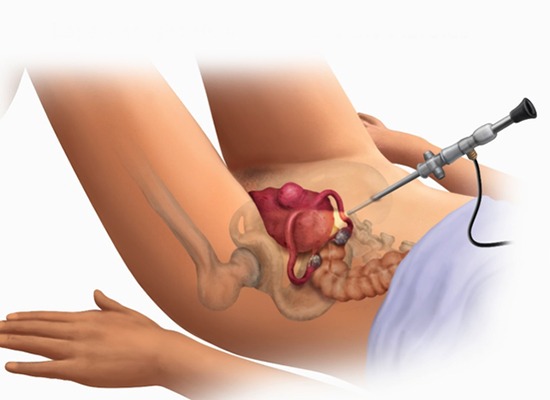Laparoscopy Fibroid Removal
- 𝗛𝗼𝗽𝗲 𝗪𝗼𝗺𝗲𝗻'𝘀 𝗛𝗼𝘀𝗽𝗶𝘁𝗮𝗹
- Laparoscopy Fibroid Removal


Laparoscopic Fibroid Removal (Myomectomy) at HOPE Women’s Hospital
Laparoscopic fibroid removal, also known as laparoscopic myomectomy, is a minimally invasive surgical procedure used to remove uterine fibroids (benign tumors) while preserving the uterus. This advanced surgical technique offers several advantages over traditional open surgery, including smaller incisions, faster recovery times, reduced postoperative pain, and minimal scarring. At HOPE Women’s Hospital, we specialize in laparoscopic fibroid removal to provide effective treatment for women with fibroids and improve their quality of life.Understanding Uterine Fibroids
Uterine fibroids are non-cancerous growths that develop in the uterus during a woman’s reproductive years. Fibroids can vary in size, number, and location within the uterus and may cause symptoms such as:
- Heavy Menstrual Bleeding: Excessive or prolonged menstrual periods (menorrhagia) leading to anemia and fatigue.
- Pelvic Pain: Discomfort, pressure, or pain in the pelvic region, lower abdomen, or lower back.
- Urinary Symptoms: Frequent urination, urinary urgency, or difficulty emptying the bladder due to fibroid pressure on the bladder.
- Pelvic Pressure: Sensation of fullness or pressure in the pelvic area, especially during bowel movements or intercourse.
- Infertility or Pregnancy Complications: Fibroids may affect fertility by interfering with implantation or causing pregnancy complications such as miscarriage, preterm labor, or cesarean section.
Indications for Laparoscopic Fibroid Removal
Laparoscopic fibroid removal (myomectomy) may be recommended for women with symptomatic fibroids who: Experience moderate to severe symptoms such as heavy menstrual bleeding, pelvic pain, or pressure affecting quality of life. Desire to preserve fertility or maintain the option of future pregnancy, as myomectomy preserves the uterus and can improve fertility outcomes. Have fibroids that are causing infertility or pregnancy complications and require surgical intervention to improve reproductive health. Prefer a minimally invasive approach with smaller incisions, faster recovery times, and reduced postoperative discomfort compared to open surgery.
Benefits of Laparoscopic Fibroid Removal (Myomectomy)
Preservation of Uterus: Laparoscopic myomectomy preserves the uterus, allowing women to maintain their reproductive potential and fertility.
Improved Symptoms: Removal of symptomatic fibroids can lead to relief from heavy menstrual bleeding, pelvic pain, pressure symptoms, and urinary problems.
Enhanced Fertility: Myomectomy may improve fertility outcomes for women with fibroids affecting fertility by removing barriers to conception and implantation.
Minimally Invasive: Laparoscopic surgery involves small incisions, less postoperative pain, shorter hospital stays, faster recovery, and minimal scarring compared to open surgery.
Customized Approach: Surgeons can tailor laparoscopic myomectomy to the size, location, and number of fibroids in the uterus, providing personalized treatment for each patient.
Reduced Risk of Complications: Minimally invasive techniques used in laparoscopic myomectomy reduce the risk of complications such as infection, blood loss, and adhesion formation.
The Laparoscopic Fibroid Removal Procedure
During laparoscopic fibroid removal (myomectomy), the surgeon uses a laparoscope (a thin, lighted tube with a camera) and specialized surgical instruments inserted through small abdominal incisions to:
Visualize the Uterus and Fibroids: The laparoscope provides a magnified view of the uterus, fallopian tubes, ovaries, and fibroids on a monitor.
Isolate and Remove Fibroids: The surgeon carefully identifies and isolates individual fibroids, then uses laparoscopic instruments to remove them from the uterus while preserving healthy tissue.
Repair Uterine Defects: After fibroid removal, any uterine defects or incisions are repaired using sutures or tissue-sealing techniques to ensure proper healing and integrity of the uterus.
Close Incisions: The small abdominal incisions are closed with sutures or surgical tape, and dressings are applied to promote healing.
Recovery and Postoperative Care
After laparoscopic fibroid removal, patients typically experience:
Short Hospital Stay: Most patients can go home the same day or within 24-48 hours after surgery, depending on individual recovery and surgical factors.
Recovery Time: Patients may return to normal activities within 1-2 weeks, with limited activity restrictions and gradual resumption of daily routines.
Pain Management: Over-the-counter pain medications or prescription pain relievers may be prescribed to manage postoperative discomfort.
Follow-up Appointments: Follow-up appointments with the healthcare provider are scheduled to monitor healing, discuss postoperative care instructions, and address any concerns or questions.
Why Choose HOPE Women's Hospital for Laparoscopic Fibroid Removal?
Experienced Surgeons: Our team includes experienced gynecologists and laparoscopic surgeons skilled in performing laparoscopic fibroid removal (myomectomy) with precision and expertise.
Advanced Technology: We utilize state-of-the-art laparoscopic equipment, high-definition cameras, and energy devices to ensure safe, effective, and minimally invasive procedures.
Comprehensive Care: We offer comprehensive preoperative evaluations, personalized surgical plans, and compassionate postoperative care to optimize patient outcomes and satisfaction.
Patient-Centered Approach: We prioritize patient education, counseling, and involvement in treatment decisions, ensuring a positive surgical experience and optimal recovery.

GET APPOINTMENT
Schedule Your Consultation
APPOINTMENT
If you have symptomatic fibroids or require fibroid removal surgery, schedule a consultation with our healthcare team at HOPE Women's Hospital. We are dedicated to providing you with expert surgical care, personalized treatment options, and support to address your fibroid-related concerns and improve your quality of life.

